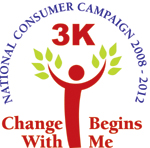| NST : Diabetes: Control daily sugar intake |
 |
 |
 |
| Written by Administrator |
| Monday, 14 September 2009 14:23 |
|
DIABETES cases in the country are reaching alarming proportions. At the Dewan Rakyat last week, it was mentioned that at least 11 out of every 100 Malaysians suffer from this disease. Over the last five years, there has been a 27 per cent increase in the number of diabetes cases. Diabetes Type 2 is strongly linked to high sugar consumption and obesity. In view of our country's alarming diabetes rate, which is expected to rise steadily, urgent steps need to be taken. The Consumers' Association of Penang urges the Health Ministry to work with other ministries to take the following action: - To require manufacturers to amend their labels to show the amount of sugar in their food. This information must be understood easily by consumers. The sugar content could be shown graphically in terms of the number of teaspoons of sugar. (One teaspoon is equivalent to 5g.) The guideline on sugar consumption is that it should not exceed 50g a day. Daily sugar intake can come from many sources. CAP has found that some products, such as certain brands of fizzy drinks, contain about seven teaspoons of sugar. The consumption of just one can of this drink in a day will result in a person's sugar consumption almost reaching the maximum limit. With this improved labelling, consumers can see the amount of sugar they are consuming and adjust their habits accordingly. - To institute a "traffic light" labelling to boost consumer awareness. This scheme has been shown to be effective in enabling consumers to assess the nutrient levels in a product and also allows for comparison between products. This traffic light system will provide information not only on the level of sugar in food products but also other ingredients of concern, such as saturated fats, trans fats and salt. Under this scheme, red, orange and green colour-coding will indicate whether the levels of these ingredients of concern are high, medium or low. The red, orange or green signals on food packaging will serve alert consumers instantly. It will prompt manufacturers to formulate healthier versions of their products. - To remove vending machines dispensing junk food and sugary drinks from schools and hospitals. - To halt advertisements of highly-sugared junk food and drinks during children's television viewing hours. Norway, Australia and Sweden have taken action in this area. - To encourage children to avoid sweet drinks by providing water dispensers in school. Sweet drinks should not be sold in school canteens so that children learn to select water as the first-choice drink. - To ban the sale of junk food, which includes products with high sugar content, in school canteens. Hawking of food within a fixed perimeter around schools should be banned so that schoolchildren are not tempted to buy and eat unhealthy foods. - To require that supermarkets control the easy availability of sweets and other unhealthy food at check-out counters where customers are stationary for a long period. There is added temptation for impulse buying at this time, especially when pestered by children. Parents must play their role in ensuring that highly-sugared products and sweets are not stocked in their homes. An environment that is conducive for individuals to make healthy lifestyle choices should be created. This is critical when it comes to the younger generation. By : S.M. MOHAMED IDRIS, for Consumers' Association of Penang 4 December 2007
|
NCCC NEW OFFICE
| National Consumer Complaints Centre | |||||||||||
|
 NCCC di Pentas Media
NCCC di Pentas Media 


